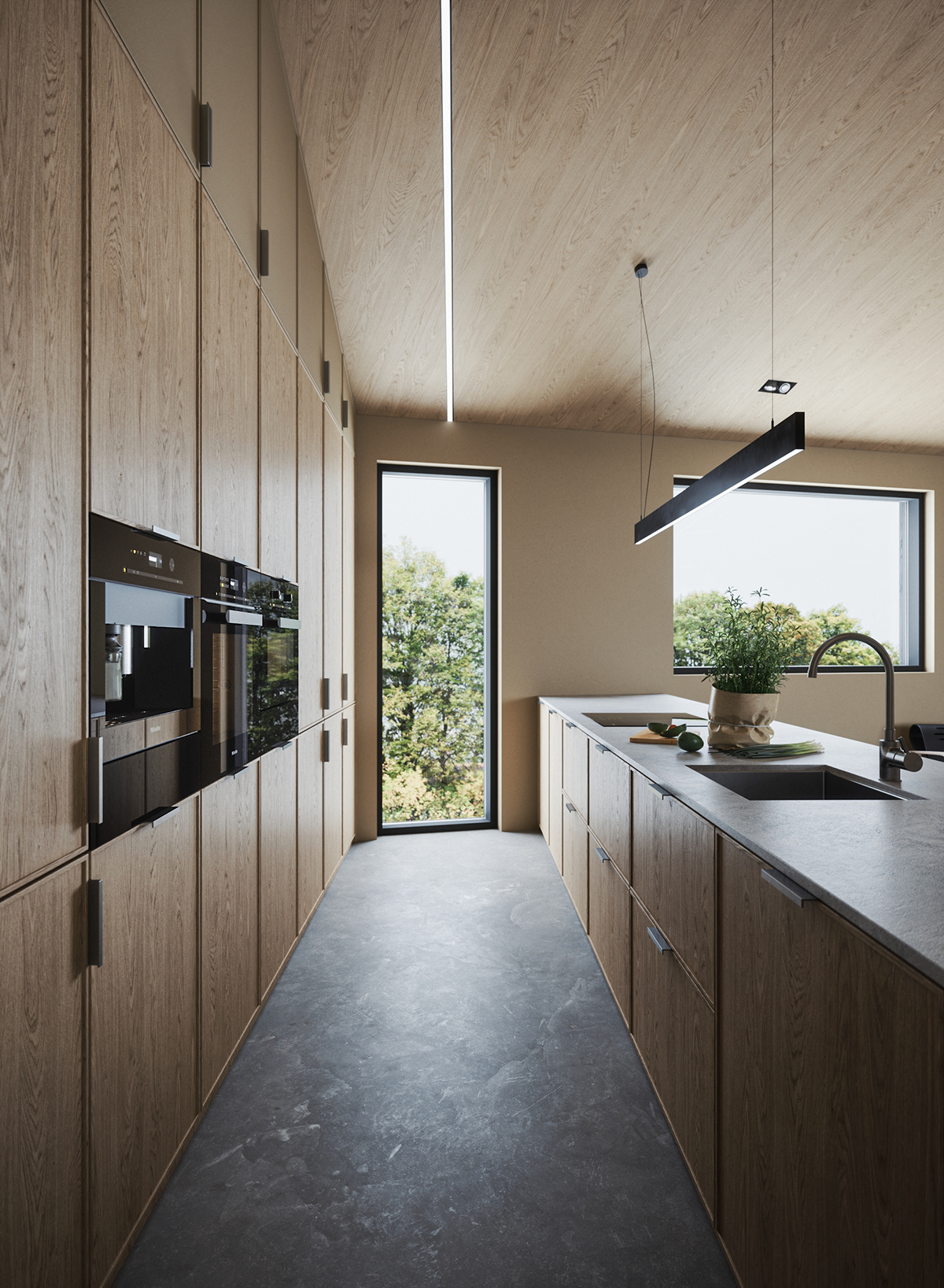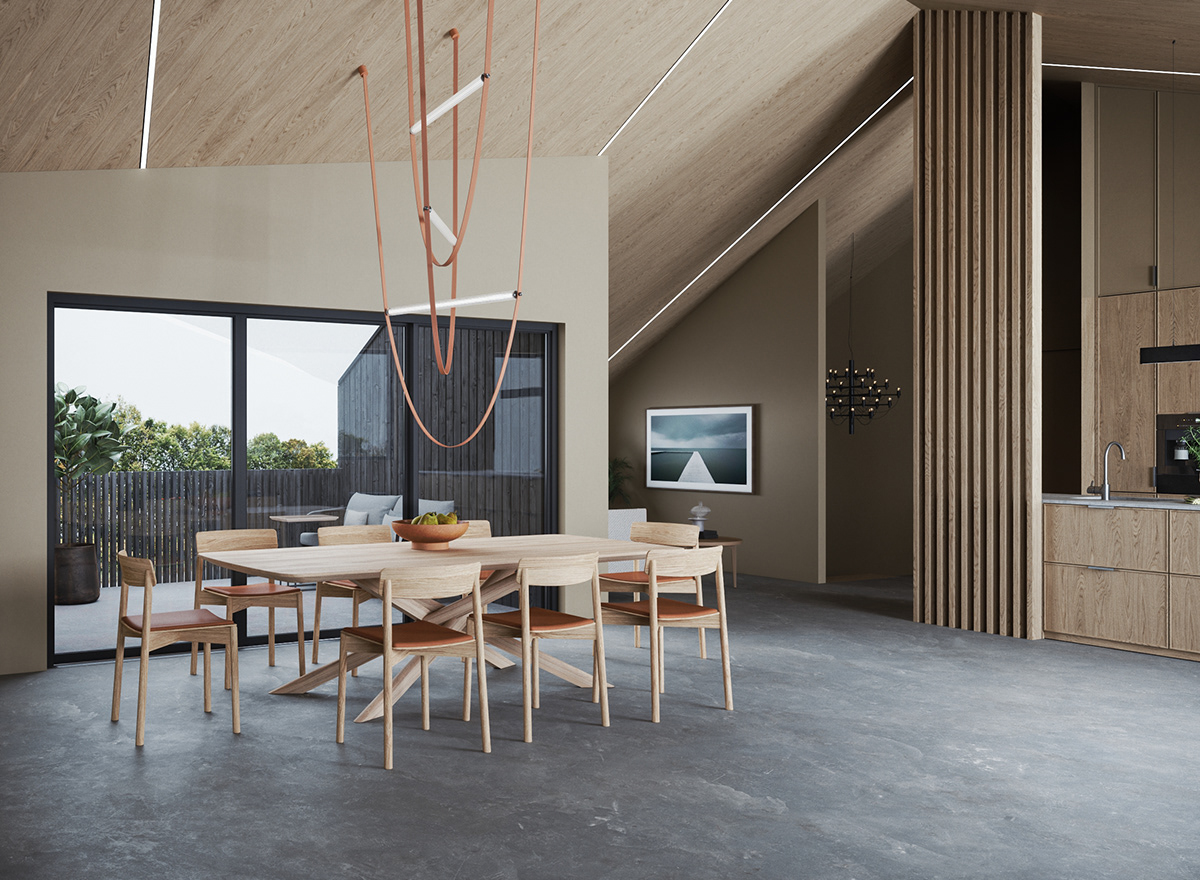
Harmony.
Aamodt house
Aamodt house
Type: Commercial project.
Architect: Manuela Hardy.
3D and visualization: Damir Fattakhov, Xenia Jee.
Tasks: Landscape design, interior design, modeling, rendering.
Architect: Manuela Hardy.
3D and visualization: Damir Fattakhov, Xenia Jee.
Tasks: Landscape design, interior design, modeling, rendering.
Software: 3dsmax, Fstorm GPU, ForestPack, Quixel Megascans, ArchiCAD, Photoshop.
PC: Intel Core i9 7980X, x2 Asus ROG Strix RTX 3090 24Gb.
Location: Sandnes, Norway.
Status: Constructing..
Location: Sandnes, Norway.
Status: Constructing..
Year: 2021.
The project presents a two-storey house for a family from Sandnes, Norway in a picturesque forest corner within the city limits. The house is built using black wood in general and light wood in some parts. Also, the use of metal and glass in this combination gives the house a monumental character that will definitely stand out from other houses in the area. There is a garage for one car and an open warehouse, as well as a sub-ground floor that can be used at will. The area around the building has a very useful fertile soil for planting crops and for sowing a lawn.
Inside the building, premium light wood materials are used for the individual pieces and decorative plaster for the walls, all complemented by dark paint accents. Used noble materials of leather, metal, fabrics for accessories. The house has a lot of windows for good and uniform illumination of rooms in the daytime, so that artificial lamps can not be used.
For the project, the latest version of the Fstorm render engine was used, all images were taken in the range from 10 to 20 minutes in full resolution. This rendering system was chosen and used for some reason, firstly, interactive render in full resolution (faster than the same Corona which renders interactive, depending on the resolution of the screen used) or Vray that could use rendering in full resolution but it too slow and takes much more time to control. Secondly, this is GPU rendering, so the calculation here takes place a little according to different algorithms, the render is faster, the light is more voluminous, the shaders are just better and detailed because of the materials that do not have anti-aliasing filters, which of course speed up the rendering, but also blur important details on the textures. And thirdly, the whole system of work in 3D is more stable, since both the CPU and the GPU are used for the calculation, unlike systems based on Corona, everything in the system is calculated on the CPU, from updating materials to banal work with geometry, so there is general instability , friezes, lags. These are just three points why this rendering engine is better choice, not only for archviz!
Hope you like our job and enjoy!
D.







































